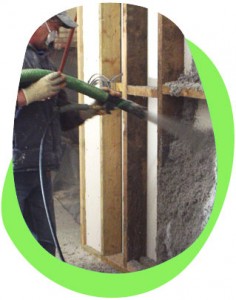 As far as keeping warm is concerned, insulation is the first thing to consider. A huge amount of heat is lost through loft spaces and walls. But it doesn’t have to be this way. There is lots that can be done to reduce heat loss, including some measures, such as draught-proofing, which do not cost much money and do not need skilled installers. Further information can be obtained from the Energy Saving Trust and the National Energy Foundation. The Renewable Energy Centre website contains information on home energy saving with links to suppliers and contractors.
As far as keeping warm is concerned, insulation is the first thing to consider. A huge amount of heat is lost through loft spaces and walls. But it doesn’t have to be this way. There is lots that can be done to reduce heat loss, including some measures, such as draught-proofing, which do not cost much money and do not need skilled installers. Further information can be obtained from the Energy Saving Trust and the National Energy Foundation. The Renewable Energy Centre website contains information on home energy saving with links to suppliers and contractors.
In the UK, always check your home EPC (Energy Performance Certificate) for energy-saving recommendations.
Double glazing makes rooms feel warmer, cuts draughts and saves energy, halving the amount of heat lost through windows. Try to avoid double glazing using PVC, as PVC is a toxic carcinogen being phased out in other European countries but still widely used in Britain. The greenest alternatives are Iplus double glazing units and the ecoplus system, designed and built with the environment in mind, from Green Building Store. The Energy Saving Trust has a searchable database of products, including windows, which bear the ‘Energy Saving Recommended’ logo. For cheap but not long-lasting window insulation you can buy plastic film to put over windows, from many DIY shops. The Window Suppliers website has a directory of installers of replacement windows, doors and conservatories, but does not provide information about the individual companies.
Loft insulation alone cuts down energy usage (and heating bills) by 20%. For loft or wall insulation Warmcel 100% recycled newspaper insulation, non-toxic and recyclable, can be used instead of fibreglass. Ask your loft insulation installer to use it, or it is available direct from Green Building Store. Another alternative is Thermafleece, a natural insulation material using the blended wool of British hill sheep developed by Second Nature UK Ltd who claim it is completely safe to handle, fire resistant, has a life expectancy of more than 50 years and is recyclable.
Newer houses are likely to have cavity wall insulation, as there are Building Regulations which determine how much heat can be lost through the fabric of a house, but in older ones cavity wall insulation can help. Another alternative is to line the inside of outside walls with insulation board, but this will reduce the size of the room by the thickness of the board (about 40mm) and is best done when redecorating.
Aluminium foil put behind radiators will reflect the heat into the room. Novitherm panels are specially profiled thermal insulating panels to go behind radiators, reflecting heat back into the room and improving the circulation of warm air in the room.
Grants are available for loft and cavity wall insulation and other energy efficiency measures, particularly if you are on a low income, over 60, disabled or have children under 16.
Draught-proofing
Draught-proofing is cheap and makes a big difference to comfort, quickly paying for itself in savings on energy bills. DIY shops sell a wide variety of easy-to-apply products to go round doors, windows and even letterboxes. Gaps under skirting boards and between floorboards can be filled with newspaper, papier mache or mastic sealant. However, do not block airbricks and ensure that there is sufficient ventilation for open fires and gas fires and cookers.
Insulating hot water tanks and pipes
If you have a hot water tank it needs to be well-insulated. New ones may come already covered in hard insulating foam but if not an insulating jacket is cheap and easy to fit – or use an old duvet to help keep the heat in. Insulating pipes with strips of foam, available from DIY shops, will also save energy.